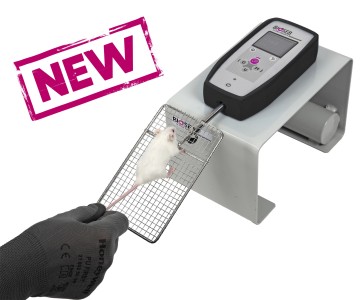Authors
L yung-Shuen, L Fang-Yu, H Ya-Hsin
Lab
College of Medicine, National Cheng Kung UniversityTainanTaiwan
Journal
Molecular Neurobiology
Abstract
With aging, there are progressive functional declines in multiple organ systems. One of the major physiological problems observed in aged people is skeletal muscle loss. This age-related muscle loss causes muscle weakness and disability, which in turn might reduce the quality of life in older adults and lead to the progression of several diseases, particularly Alzheimer’s disease (AD). Some researchers have hypothesized that loss of muscle mass and strength is linked to the risk of developing AD. In addition, unintended weight loss often occurs in AD patients and might reflect dementia severity. However, the causal relationship between muscle atrophy and cognitive deficits in AD is unclear. We found that double transgenic amyloid precursor protein and presenilin 1 (APP/PS1) mice that co-express APP and PS1 at older ages exhibited lower body weight and lean tissue mass than sex- and age-matched wild-type (WT) mice. In addition, muscle atrophy and the extent of memory decline were strongly correlated in APP/PS1 mice. Myostatin levels in the gastrocnemius (GAS) muscle of 12-month-old APP/PS1 mice were elevated. We determined that the cellular and molecular mechanism of muscle atrophy was through the ubiquitin-proteasome pathway. Furthermore, myostatin knockdown in the GAS muscles increased grip strength and muscle mass, leading to memory improvement in myostatin short-hairpin RNA-treated APP/PS1 mice. We conclude that high-level myostatin expression might mediate or trigger muscle atrophy and cognitive deficits.
BIOSEB Instruments Used
Grip strength test (BIO-GS3)
Source :

 Pain - Thermal Allodynia / Hyperalgesia
Pain - Thermal Allodynia / Hyperalgesia Pain - Spontaneous Pain - Postural Deficit
Pain - Spontaneous Pain - Postural Deficit Pain - Mechanical Allodynia / Hyperalgesia
Pain - Mechanical Allodynia / Hyperalgesia Learning/Memory - Attention - Addiction
Learning/Memory - Attention - Addiction Physiology & Respiratory Research
Physiology & Respiratory Research











![Dynamic Weight Bearing 2.0 – Postural Module [Add-on]](https://bioseb.com/733-home_default/dynamic-weight-bearing-20-add-on-postural-module.jpg)
























 Pain
Pain Central Nervous System (CNS)
Central Nervous System (CNS) Neurodegeneration
Neurodegeneration Sensory system
Sensory system Motor control
Motor control Mood Disorders
Mood Disorders Other disorders
Other disorders Muscular system
Muscular system Joints
Joints Metabolism
Metabolism Cross-disciplinary subjects
Cross-disciplinary subjects CONFERENCES & MEETINGS
CONFERENCES & MEETINGS 